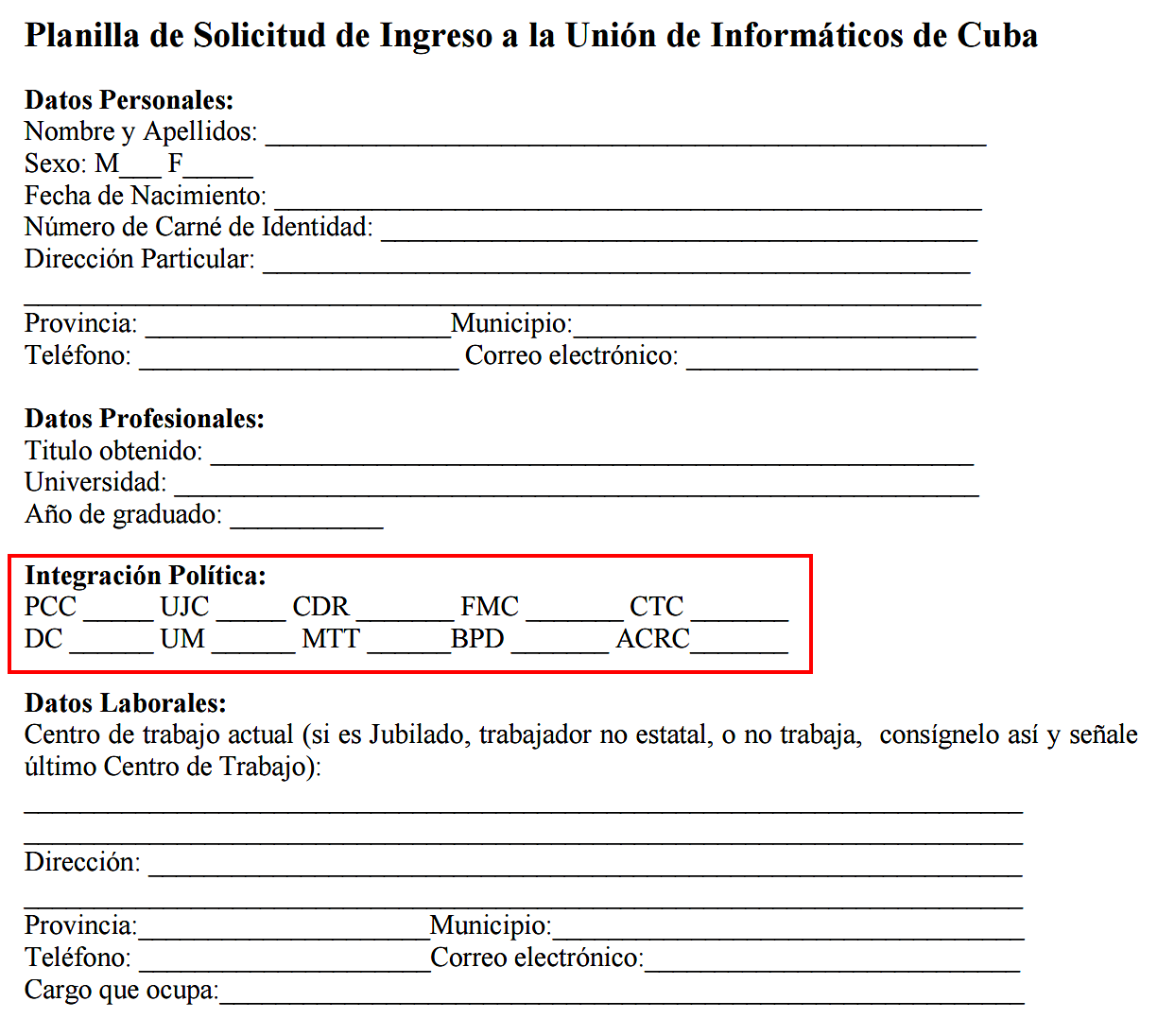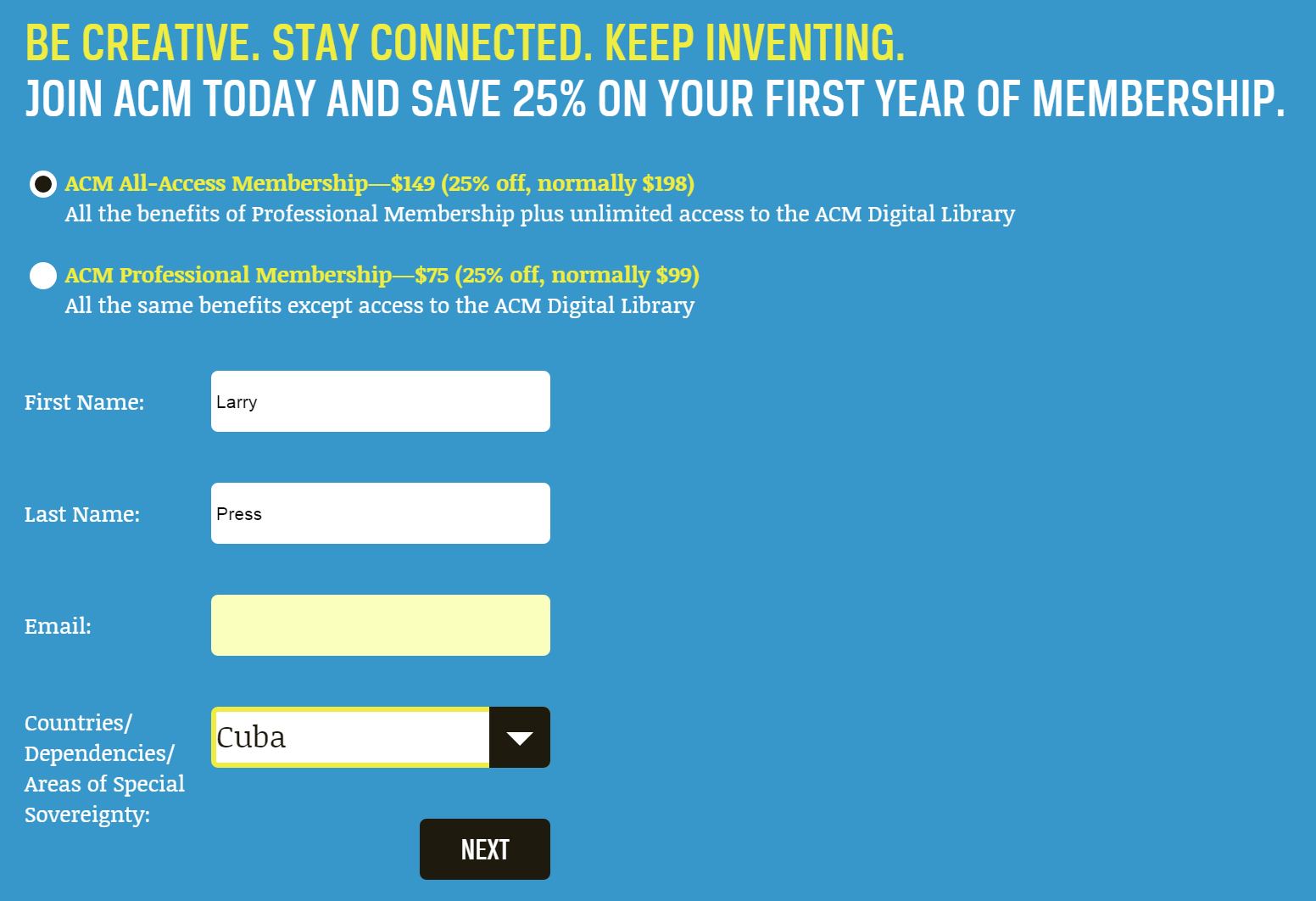aNewDomain — In Cuba, during the First National Workshop on Computerization and Cybersecurity in Havana, the formation of the Unión de Informáticos de Cuba (UIC) was announced.
It was a plenary event, and more than 7,500 computer professionals viewed the event via teleconference, which is saying a lot in Cuba.
My initial reaction? Cool. Vert cool. It sounded a lot like the Association for Computing Machinary (ACM), but as I delved into the UIC’s agenda I realized there are some stark differences between the ACM and the Cuban organization. The differences seem to reflect bureaucratic and cultural differences between Cuba and the U.S., and the ACM was established 68 years ago, whereas the UIC is basically brand new.
ACM vs UIC
To start, the ACM defines itself as a “professional society” and was founded at a meeting in Columbia University in 1947. It’s tagline is “advancing computing as a science and a profession,” which, at its most basic, is not in any way tied to the government.

The UIC, meanwhile, was created by the Cuban Ministry of Communication, which runs the telephone and Internet systems of the whole country. Yoani Sanches points out that the membership application form for the UIC (pictured right, red box added) requests political affiliations, like whether or not you are a member of the Young Communist Union or Community Party.
I could never imagine ACM asking me if I was a Democrat or Republican upon entering the organization.
The UIC takes its membership much more seriously than the ACM. For instance, you can apply to the UIC, but have to wait for acceptance, and even if you do get in you could be dropped for infractions, like violating the code of ethics. Applicants have to complete the UIC form by July 15, attach a copy of their diploma, a photo and a CV, and then wait to see if they get in.
I doubt Steve Jobs or Bill Gates could have even applied to the organization and it’s unclear if someone slightly outside of the field, like a biologist who modeled genes on computers, would even be eligible.
 ACM can be joined by simply filling out a basic form and paying for the first year’s dues. Granted, members are supposed to have either a bachelor’s degree, the equivalent level of education or two years full-time employment in the IT field. No one checks up on this, though. The ACM also provides profile options where members can list specific professional interests and specialties, but its not used for screening applications, just for allocating resources (and ads, maybe).
ACM can be joined by simply filling out a basic form and paying for the first year’s dues. Granted, members are supposed to have either a bachelor’s degree, the equivalent level of education or two years full-time employment in the IT field. No one checks up on this, though. The ACM also provides profile options where members can list specific professional interests and specialties, but its not used for screening applications, just for allocating resources (and ads, maybe).
Currently the UIC is a Cuban organization, open only to Cubans. ACM, meanwhile is global and has chapters in 57 nations.

ACM has 138 active chapters
ACM reaches out to young people via student chapters on college campuses and, while UIC does not yet have student chapters, Cuba devotes significant resources to training potential computer users and professionals via a well-established system of Youth Computer Clubs (YCCs). The government established 32 YCCs in 1987 and today over 2.25 million kids and adults have completed courses (and played games) at 611 YCCs.
ACM offers concrete benefits including the monthly Communications of the ACM magazine, online access to articles, books, videos, webinars and courses and membership in over 170 special interest groups. It’s not entirely clear what the UIC will be offering, but establishing an organized group of computer professionals in Cuba is a big deal.
The largest difference, of course, is time. ACM was formed in 1947. Its had 68 years to organize, capitalize and grow. I wonder what will UIC be offering members 68 years from now?
For aNewDomain, I’m Larry Press.
All screenshots: Larry Press













